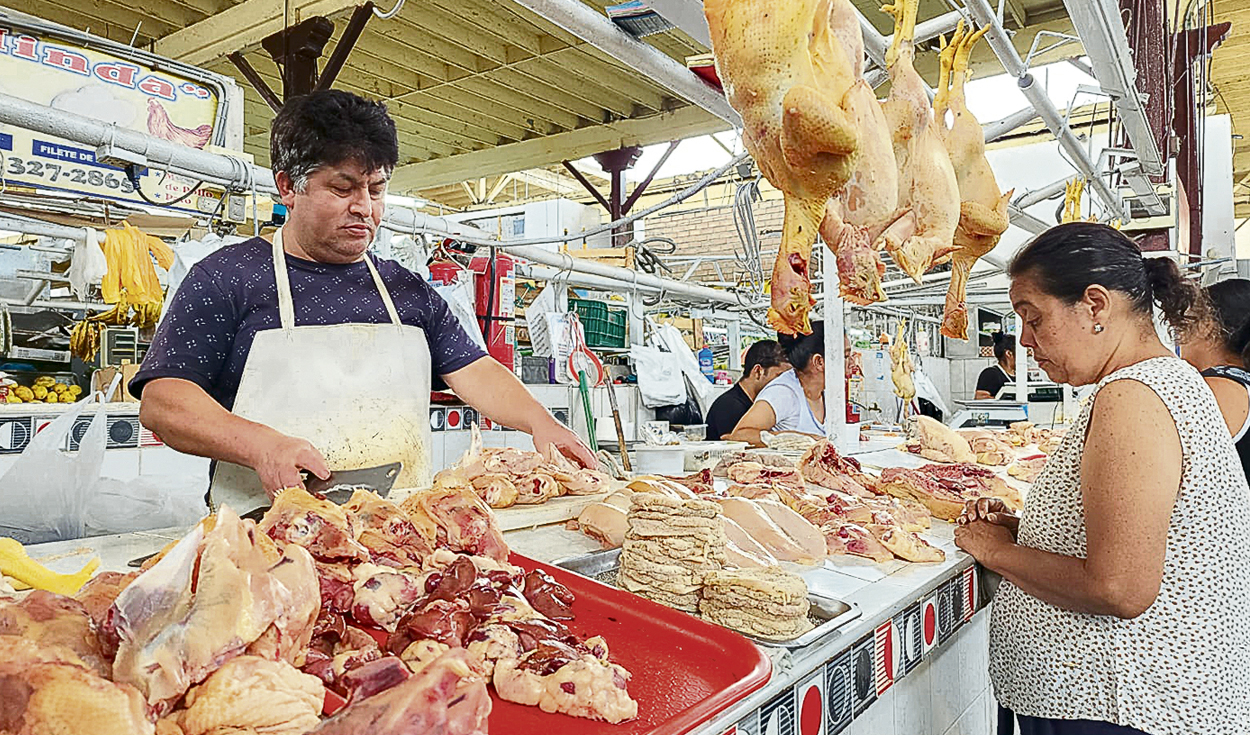
Upward. Wholesalers rose by more than 24% in the last 3 months. Increase is due to soybean shortage and bird flu.
In the last three months, the wholesale price of chicken has increased by 24.7% or S/1.60 per kilogram. It went from around S/6.62 on December 1, 2022 to S/8.22 yesterday, March 3. This rise has been more accentuated in the retail markets of Metropolitan Lima where the meat of this bird is sold for up to S/12.5 per kg.
The rise of this food, one of the main ones in the Peruvian diet, It is explained by the reduction in supply due to the shortage of inputs such as soybeans that have not been able to enter the country due to the blockade of roads in the south, indicates Pedro José de Zavala, director of the Peruvian Poultry Association (APA). “The soy that chickens eat comes from bolivian and since the Desaguadero highway has been closed, it has not been able to pass,” he mentions. He adds that the scarcity of this product has slowed growth and raised the cost of producing the bird.
According to Midagri, cake imports soy from the highland country, represents almost 55% of total purchases in Peru.
Another factor that has affected prices is the presence of bird flu, which has forced farms to reduce their load of fertile eggs to reduce the risk of spread of the disease. “What they (poultry farmers) have done is stop breeding at the risk that their chickens will die and they will lose capital,” the APA representative told La República.
However, this situation will improve in the coming weeks, due to the fact that Midagri, through Senasa, authorized the application of the avian flu vaccine, says De Zavala.
Market prices
In the La Aurora market in Cercado de Lima, chicken was sold for S/12.5. While in the Limoncillo Market and the Model Market, the price was S/12 per kilogram.
In the north of the country, in Piura, the kilo reached S/13. While in La Libertad the merchants sold the bird for S/12 per kg. In the extreme south, in Tacna, it was sold between S/11 and S/12 per kilo. The prices were similar in Arequipa.
The amount
10% is the percentage by which egg production has been reduced, according to the APA.
Source: Larepublica
Alia is a professional author and journalist, working at 247 news agency. She writes on various topics from economy news to general interest pieces, providing readers with relevant and informative content. With years of experience, she brings a unique perspective and in-depth analysis to her work.











